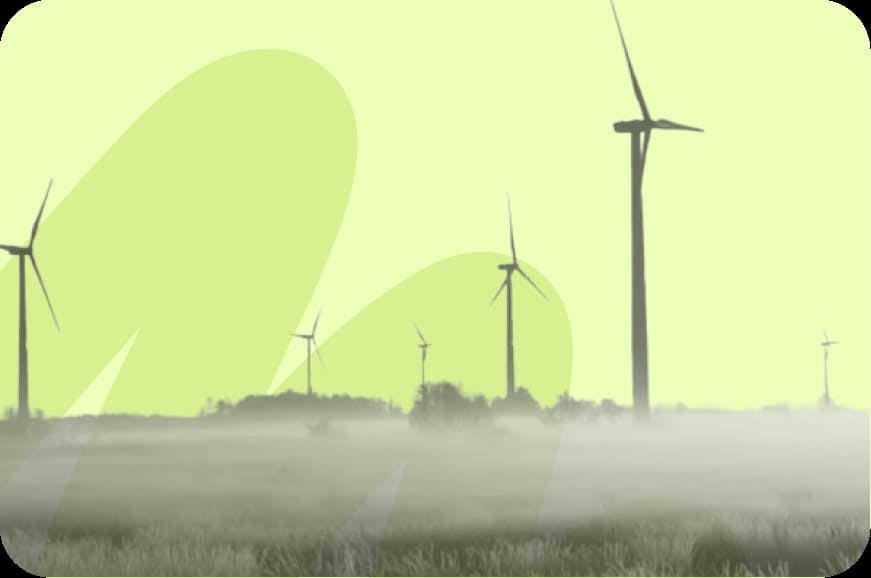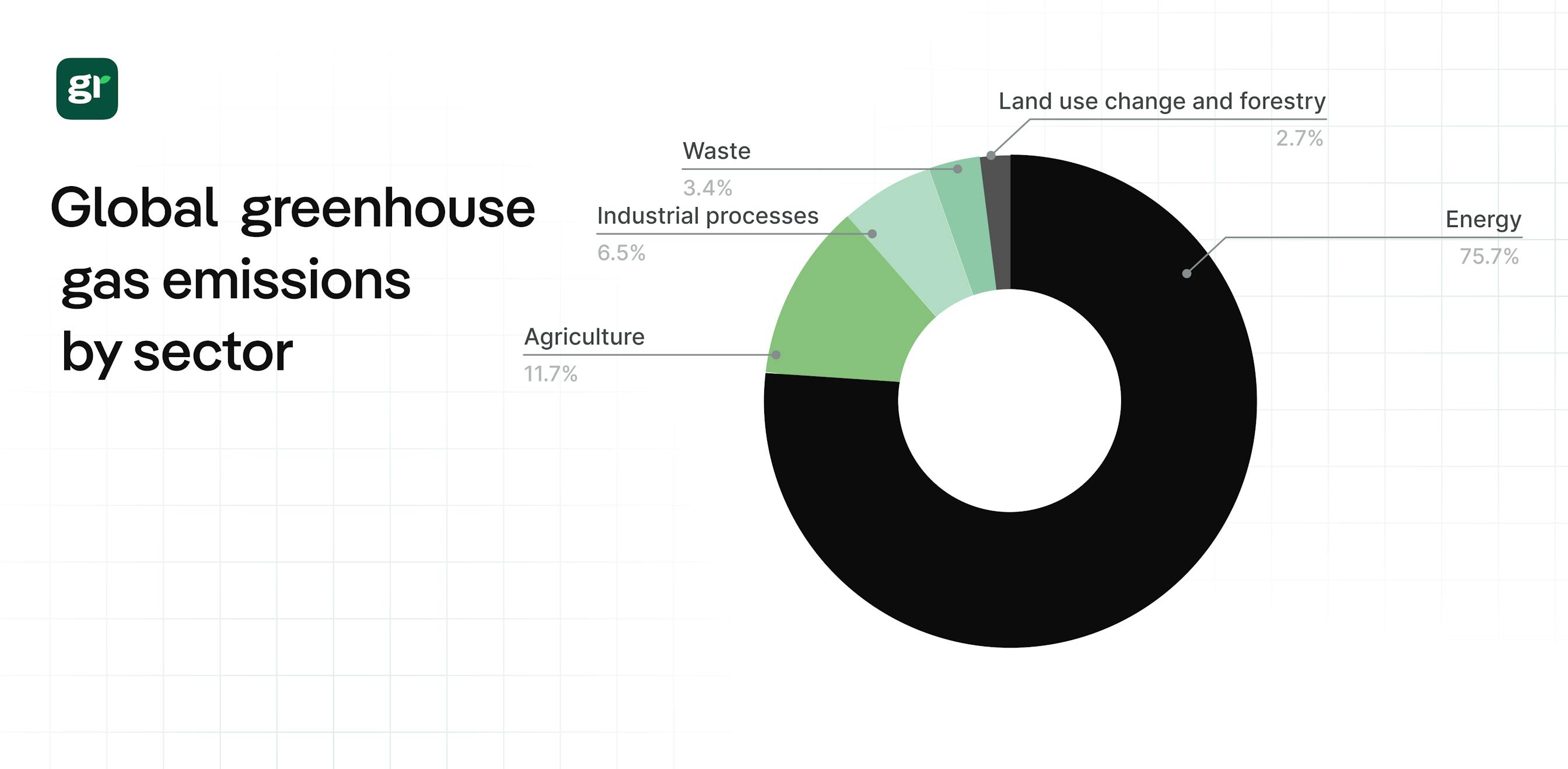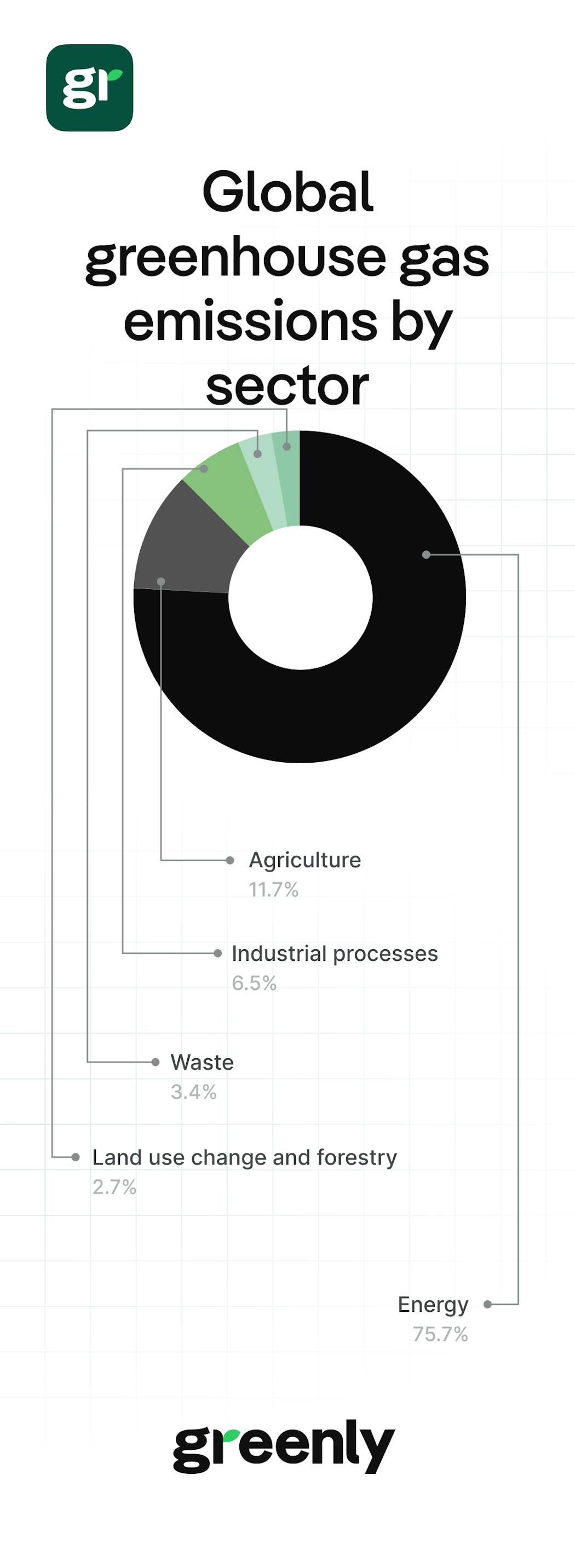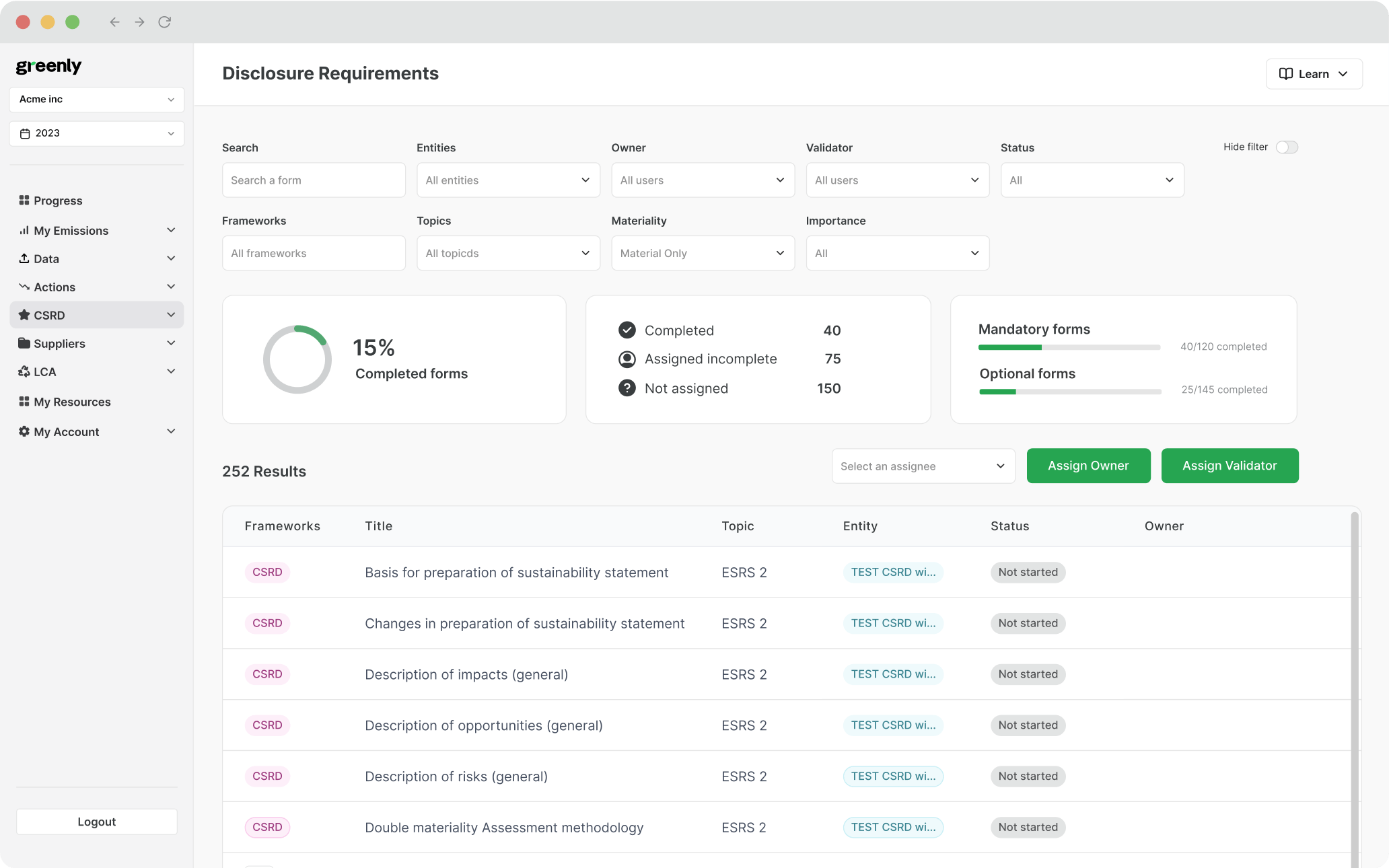
California Climate Accountability Package: SB253, SB261, & SB252
What is the California Climate Accountability Package, and how do SB 253 and SB 261 (SB 219), and SB 252 help the state work towards their environmental goals?
ESG / CSR
Industries



This makes decarbonization one of the most urgent challenges we face.
Decarbonization is the process of systematically reducing carbon emissions across all areas of the economy – from how we generate power to how we build, manufacture, and transport. It’s about moving away from fossil fuels and reshaping our systems around low-carbon energy sources and more sustainable alternatives.
But what does that actually look like in practice, and how can businesses start making real progress?
Decarbonization isn’t a single action, it’s a long-term transformation of how we generate energy, produce goods, move people and resources, and grow economies. And it’s the cornerstone of efforts to limit global warming and build climate resilience.
To understand why decarbonization is so urgent, we need to look at how global emissions reached their current levels.
Industrial Revolution: Human activity significantly increased the concentration of greenhouse gases in the atmosphere, primarily through burning fossil fuels like coal, oil, and gas. These fuels powered global economic growth and industrialization but at a steep environmental cost.
1750: Atmospheric CO₂ levels were around 280 parts per million (ppm). Today, this has risen to over 420 ppm – the highest concentration in at least 800,000 years, driving rising global temperatures, melting ice caps, and widespread ecological disruption.
2024: Despite decades of warnings, emissions continue to rise. 2024 marked the highest carbon emissions on record, with approximately 41.6 billion tonnes of CO₂ released globally – including 37.4 billion tonnes from fossil fuels alone.


Below is an infographic adapted from the World Resources Institute showing global greenhouse gas emissions by sector and end use.
To dig deeper, explore the sectors below to learn why they matter – and what needs to happen to decarbonize them.


Decarbonization is essential not only to stabilise the climate but also to protect human health, preserve ecosystems, and ensure long-term economic resilience. The cost of inaction is growing, and the consequences of continued emissions will be felt across every part of society.
Here’s what’s at stake:
| Reason | What’s at risk | Key facts |
|---|---|---|
|
Climate stability
|
Higher emissions drive global warming, resulting in extreme heat, droughts, wildfires, floods, sea level rise, and ecosystem collapse. |
According to the IPCC, limiting warming to 1.5°C requires a 45% cut in global emissions by 2030 and net zero by 2050.
|
|
Human health & safety
|
Climate change increases respiratory illness, heat stress, food and water insecurity, and disaster-related deaths – especially in vulnerable regions. |
WHO projects 250,000 additional deaths annually (2030–2050) from climate-related causes. Global South communities face 15× higher disaster mortality.
|
|
Economic resilience
|
Unchecked warming disrupts infrastructure, supply chains, agriculture, and markets – with escalating financial losses. |
Climate inaction could cost up to $69 trillion globally by 2100. Decarbonizing early is the most cost-effective option.
|
|
Environmental protection
|
Rising temperatures and CO₂ levels are accelerating biodiversity loss, coral bleaching, desertification, and freshwater shortages. |
A 10 cm rise in sea levels could displace 10 million people. Heavy rainfall events become 70% more likely at 2°C warming.
|
Decarbonization hasn’t always been a mainstream policy goal. The idea has gained traction over the decades, shaped by scientific findings, political milestones, and growing global awareness of climate risks.
Below is a timeline of key moments that have brought decarbonization to the forefront of international action:
Decarbonization isn’t just about switching from fossil fuels to renewables – it’s about transforming every part of the economy. From how we generate power to how we design our energy system, build infrastructure, move goods, and consume resources, every sector must evolve. Here are the six critical shifts that will define the path to net zero:
Decarbonizing the power sector is priority number one. This means rapidly expanding renewable energy sources like wind power and solar power, and using clean electricity generated from these sources to power heating systems, electric vehicles, and industrial systems. Energy efficiency is also a crucial aspect of decarbonizing this sector.
Steel, cement, and chemical sectors rely on high-temperature processes. Clean heat, green hydrogen, electrification, and carbon capture will all play a role, but need rapid scale-up and investment.
Road transport must shift away from fossil fuels to EVs, supported by robust charging infrastructure and renewable energy. For aviation and shipping, the focus is on sustainable fuels and efficiency improvements.
Energy efficiency is key. As one of the core energy efficiency sectors, buildings need better insulation, low-carbon heating, and smarter energy use. Scaling up retrofitting and phasing out gas boilers will be essential.
Agriculture, forestry, and land use must shift from being emission sources to carbon sinks. Solutions include regenerative farming, afforestation, peatland restoration, and carbon sequestration through improved land management.
A shift toward reuse, recycling, and better product design can reduce upstream emissions and material demand. Circular systems and extended producer responsibility will be essential.
The US has seen a turbulent climate policy landscape in recent years. Under President Biden, the nation accelerated its decarbonization efforts and re-emerged as a global climate leader. However, the political shift following the 2024 election has introduced uncertainty over future commitments.
Despite progress, challenges remain:
Stagnant emissions
U.S. greenhouse gas emissions plateaued in 2024, raising doubts about the nation’s ability to hit its 2030 decarbonization targets.
Rising energy demand
The rapid growth of AI data centers has significantly increased electricity usage, straining the power grid and complicating decarbonization efforts.
Infrastructure bottlenecks
Slow approvals for renewable projects and transmission infrastructure upgrades are delaying the integration of clean energy sources into the U.S. grid.
The 2024 election of Donald Trump brought a sharp policy turn:
These steps risk undermining years of climate progress.
While federal leadership is shifting, climate action is not stopping entirely:
Businesses play a vital role in tackling climate change. According to the Carbon Majors Database, just 57 companies are responsible for 80% of global greenhouse gas emissions – a powerful reminder of the impact the private sector can have.
The good news? With the right strategy, decarbonising your business isn’t just possible – it can unlock new opportunities, boost resilience, and help future-proof your operations.
Here are five practical ways to get started:
Before you can cut the greenhouse gas emissions produced by your company, you need to understand where they’re coming from. A full carbon footprint assessment is the essential first step. It shows you which activities, suppliers, and systems consume energy and drive the bulk of your emissions, so you can start targeting the right areas.
At Greenly, we help companies of all sizes measure and manage their emissions. Get in touch to see how we can support your decarbonization journey.
Once you know your baseline, it’s time to define where you want to go. Set SMART goals – specific, measurable, achievable, relevant, and time-bound – and link them to KPIs so you can track your progress over time.
Clarity here is key: your targets should be ambitious but achievable, and aligned with recognized frameworks like the Science Based Targets initiative (SBTi).
Decarbonization isn’t just about compliance – it’s a chance to build a more future-ready business. From reducing operational costs to attracting ESG-focused investors and new customers, the benefits go beyond emissions alone.
Companies that move early tend to lead. By investing in climate action now, you’ll build resilience, unlock innovation, and stay ahead of incoming regulation and shifting market expectations.
Your people are key to making your sustainability goals stick. Get them involved early – from ideation to implementation – and create space for collaboration, creativity, and ownership.
Build buy-in with transparent communication, offer incentives, and celebrate milestones along the way. When your team feels empowered, sustainability becomes part of your culture, not just a checkbox.
Decarbonization isn’t a one-off project – it’s a long-term shift. That means embedding it across your operations, procurement, product development, and reporting, and prioritizing more energy efficient systems and processes wherever possible.
Align your sustainability goals with broader business objectives, and regularly review your progress to stay on track.
Modern decarbonization strategies are powered by technology. From tracking emissions to planning reduction pathways, software platforms make it easier for businesses to transition to low-carbon operations.
A: Decarbonization is the process of reducing carbon dioxide (CO₂) emissions from human activities, mainly by replacing fossil fuels with renewable energy and improving energy efficiency.
A: Global emissions reached record highs in 2024. Without rapid decarbonization, we risk locking in irreversible climate impacts, including rising temperatures, extreme weather, and ecosystem collapse.
A: Energy production (electricity and heat), transportation, heavy industry, agriculture, and deforestation account for the majority of emissions worldwide.
A: Businesses can measure their carbon footprint, set clear reduction targets, switch to renewable energy, improve efficiency, and engage suppliers to reduce Scope 3 emissions.
A: Yes – Greenly helps organizations measure, report, and reduce their emissions. Our experts guide you through carbon footprinting, sustainability reporting, and creating actionable net zero strategies.
Decarbonization doesn’t have to be overwhelming. At Greenly, we help streamline the process, giving you the tools, insights, and support you need to track, understand, and reduce your emissions across your entire business.
Here’s how we support your climate journey:
| Our Services | What You’ll Gain |
|---|---|
|
Measure your emissions with confidence
|
We help you calculate your Scope 1, 2, and 3 emissions – accurately and efficiently. With our platform and expert guidance, you’ll gain a clear view of your carbon footprint and know where to focus your efforts. |
|
Take action with a clear plan
|
Once your emissions are measured, we help you to build a custom action plan – whether that’s switching to lower-emission suppliers, improving energy efficiency, adopting low-carbon solutions, or reducing waste. Our climate experts support implementation every step of the way. |
|
Tackle Scope 3 and supply chain emissions
|
Scope 3 emissions often account for up to 90% of a company’s total footprint. We help you:
|
|
Understand your product’s full impact
|
Our Life Cycle Assessment (LCA) services evaluate the environmental impact of your products from cradle to grave. This gives you credible data to improve sustainability performance, transparent insights for customers and stakeholders, and a competitive edge in a climate-conscious marketplace. |
Want to find out how Greenly could support your decarbonization goals?
Contact our team to learn more about how we can help you reduce emissions and work towards a low-carbon future.
